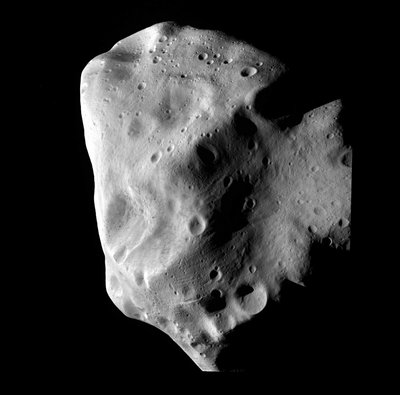All the instruments of the European spacecraft were working properly. The asteroid is a scarred remnant of the early days of the solar system

The approach flight is considered a success when all the spacecraft's systems worked as planned. Rosetta came within 3162 kilometers of Lutetia at 18:10 CET (19:10 Israel time).
The images show that Lutetia is full of craters and appears to have suffered many collisions during its 4.5 billion years of existence. As Rosetta was received, a bowl-like crater was seen melting along most of the area of the asteroid that had rotated into the spacecraft's field of view. The images confirmed that the asteroid has an elongated body, with the diameter of the longest part being 130 kilometers.
The images are from the Osiris device, which combines a wide-angle camera and a narrow-angle camera. At the closest point, objects 60 meters in size could be observed on the surface of Lutetia.
"I believe this is a very ancient bone. Today we saw remnants of the creation of the solar system," said Holger Sirkes, Osiris principal investigator from the Max Planck Institute for Solar System Research in Lindau, Germany.
Rosetta passed by the asteroid at a speed of 15 kilometers per second and completed the pass in just one minute, but its cameras and other instruments worked for several hours and in some cases even several days before the approach, and they will also continue to observe the asteroid in the coming days. Shortly after approach, Rosetta began transmitting the data to Earth for processing.

4 תגובות
Do you translate lutetia or lutetia? The latter sounds more to me (think about ancient European languages and not necessarily about English)... More details and information about the spacecraft see the following link:
http://gadieid.blogspot.com/2010/07/rosetta-mission.html
Lutetia is the ancient name, from Greek and Roman times, of the town that was located in the place where the city of Paris is today.
Ami
Regarding the temperature, when it is close to the star it heats up. When it is far away it cools, when it is far enough there is no reason to have any hot part in it. The hot parts will radiate the energy out until thermal equilibrium with the void.
In such a small body the pressures cannot cause serious internal activity, certainly not over 4.5 billion years.
If we assume that it did form together with our solar system and the globe, its composition should be more or less similar to what we see in this system.
I would bet that the water that may have been there has already evaporated in his lifetime.
I wonder what the pressures and temperature are that are created inside such a small body and whether in the terrifying cold of outer space, inside such an asteroid there are places where the temperature reaches the area around room temperature. What is it made of? Is there water in it? Does it have sulfur and iron? How much carbon is there?